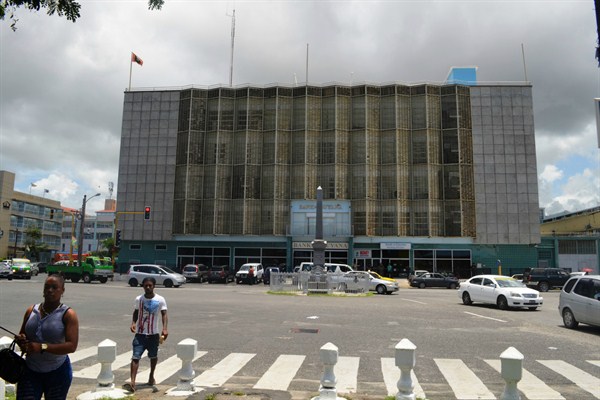The small developing nations dotting the Caribbean have recently become sites for massive amounts of foreign aid from China. Large Chinese-built infrastructure projects and millions in investments have taken their place next to sun-splashed tourists, sprawling resorts and bustling cruise ports.
Earlier this year, thousands of Chinese workers flocked to Jamaica to complete a $730 million mega-highway that cuts through the heart of the island, shaving hours off typical tourist commutes. In Barbados, Chinese officials have pledged tens of millions of dollars to restore gymnasiums, renovate historic sites, and dock a goodwill hospital ship in the capital, Bridgetown, to provide free medical care to Barbadians. In perhaps the greatest example of China’s growing presence in the Caribbean, a Chinese firm has broken ground on a mixed-use facility comprising 450 apartments and 326 hotel rooms on St. Maarten dubbed the “Pearl of China.” The beachfront property aims to become a hub for Chinese business in the region and bring Chinese businessmen and money in droves to the island.
The promise of Chinese aid and investment to the Caribbean is consistent with a pattern elsewhere in the developing world. Beijing touts its own track record as a once-developing country with a no-strings-attached approach to development assistance, highlighted by interest-free loans and what it promotes as Chinese intentions to help, not exploit, local communities. Closer relations with China and access to its aid are a potential boon for Caribbean nations seeking to break free from failed models of development. But on the ground, the situation is much more complicated. Nowhere is this clearer than in China’s oldest partner in and around the Caribbean, Guyana, where projects that brought promises of modernization are often more gilded than gold.

